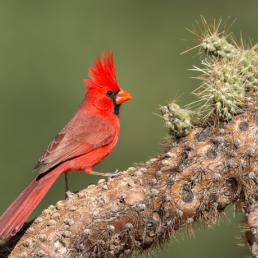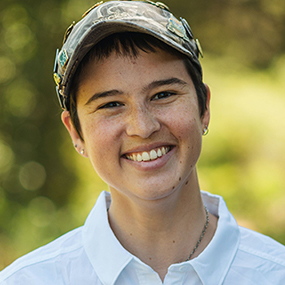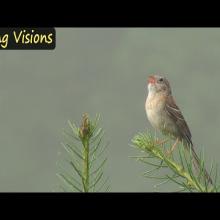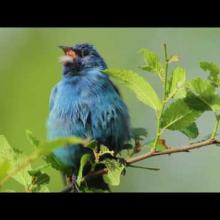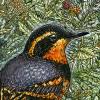

Join BirdNote tomorrow, November 30th!
Illustrator David Sibley and actor H. Jon Benjamin will face off in the bird illustration battle of the century during BirdNote's Year-end Celebration and Auction!
The stars appear to rotate in the sky, raising the question of how birds can use stars to navigate during migration. Ornithologist Stephen Emlen brought Indigo Buntings to a planetarium, tracking their movements as the simulated night sky changed above them. The buntings oriented themselves using star patterns that appear to rotate the least — especially the North Star, Ursa Major and Cassiopeia.
BirdNote®
Indigo Buntings, Master Stargazers
Written by Ariana Remmel
This is BirdNote.
[Swainson's Thrushes Calling Slightly Before Sunrise, used courtesy of BIRD CALLS and SONGS]
In any given night of migration, hundreds of thousands — if not millions — of birds travel across North America. And while clouds can obscure their view of the Earth, some birds take their directions from the stars, which act as road signs in the night sky.
But the stars appear to rotate in the sky from dusk to dawn. So how do birds find their way as their beacons move?
[Indigo Bunting song https://macaulaylibrary.org/asset/94438 ]
That’s what ornithologist Stephen Emlen wanted to uncover with a series of experiments in the 1960s and ‘70s with the help of Indigo Buntings — and the planetarium in Flint, Michigan. Emlen placed the buntings in special cages that allowed him to track their movements as the simulated night sky changed above them. Then he tinkered with the stars by blacking out some constellations or rotating the sky.
[Music: “Dimming Circuit” from Limoncello]
Emlen found that the buntings oriented themselves by looking for the pattern of stars that appear to rotate the least — especially the North Star, also called Polaris, and its nearby constellations, Ursa Major and Cassiopeia.
Next time you get a clear view of the night sky, see if you can find true north like an Indigo Bunting — the ultimate stargazer.
[Music: “Dimming Circuit” from Limoncello]
[Indigo Bunting song https://macaulaylibrary.org/asset/94438 ]
For BirdNote, I’m Ariana Remmel.
###
Senior Producer: John Kessler
Production Manager: Allison Wilson
Producer: Mark Bramhill
Associate Producer: Ellen Blackstone
Digital Producer: Conor Gearin
Music: “Dimming Circuit” from Limoncello
Swainson's Thrushes Calling Slightly Before Sunrise, used courtesy of BIRD CALLS and SONGS.
Bird sounds provided by The Macaulay Library of Natural Sounds at the Cornell Lab of Ornithology, Ithaca, New York. Indigo Bunting ML 94438 recorded by W. Hershberger.
BirdNote’s theme was composed and played by Nancy Rumbel and John Kessler.
© September 2021 / August 2023
BirdNote Narrator: Ariana Remmel
INBU-02-2021-9-6 INBU-02
Reference: https://www.jstor.org/stable/4083084
